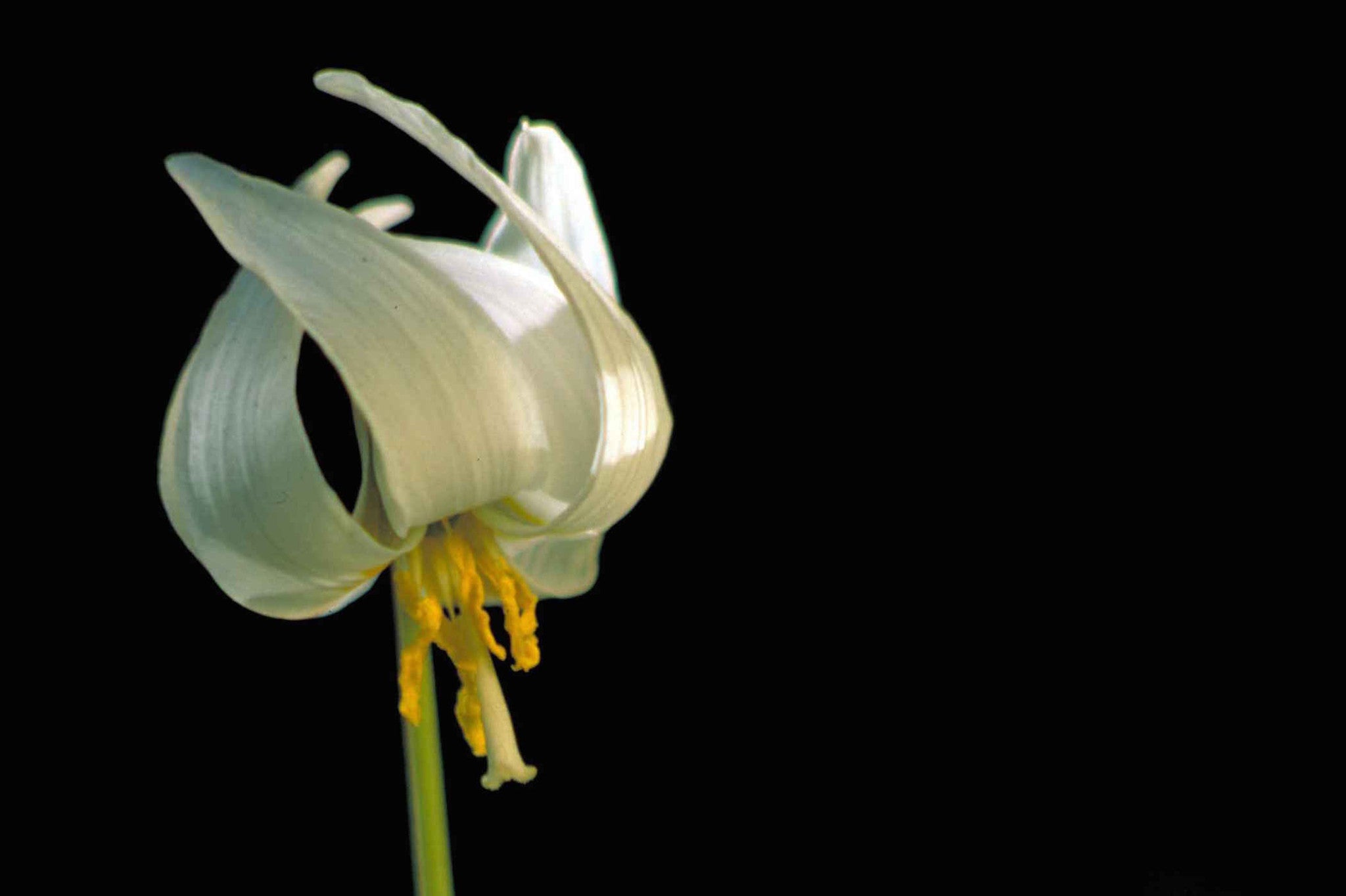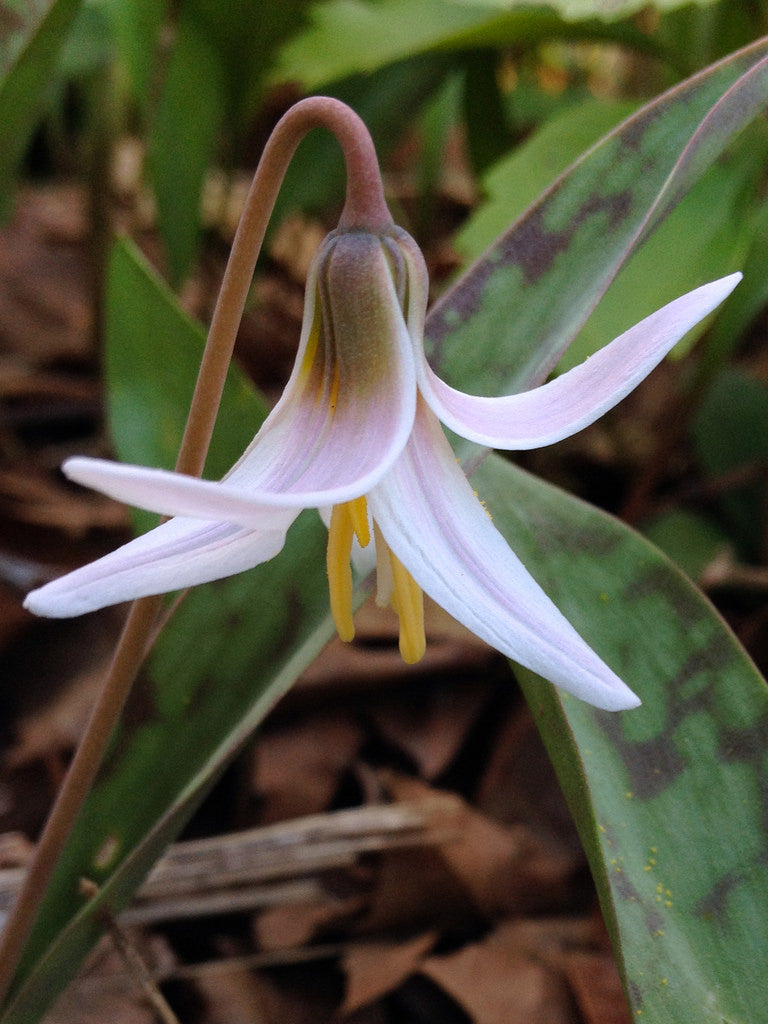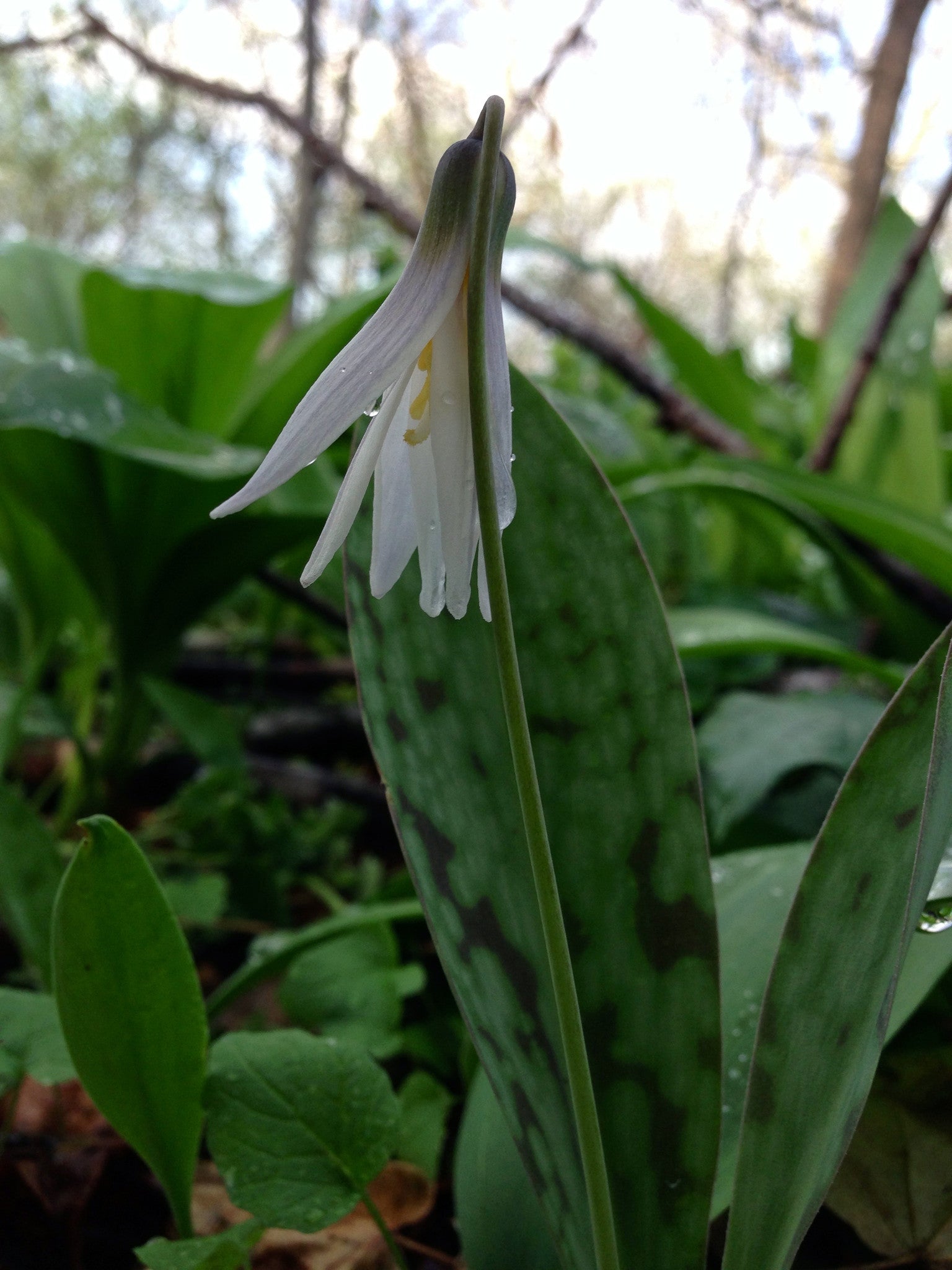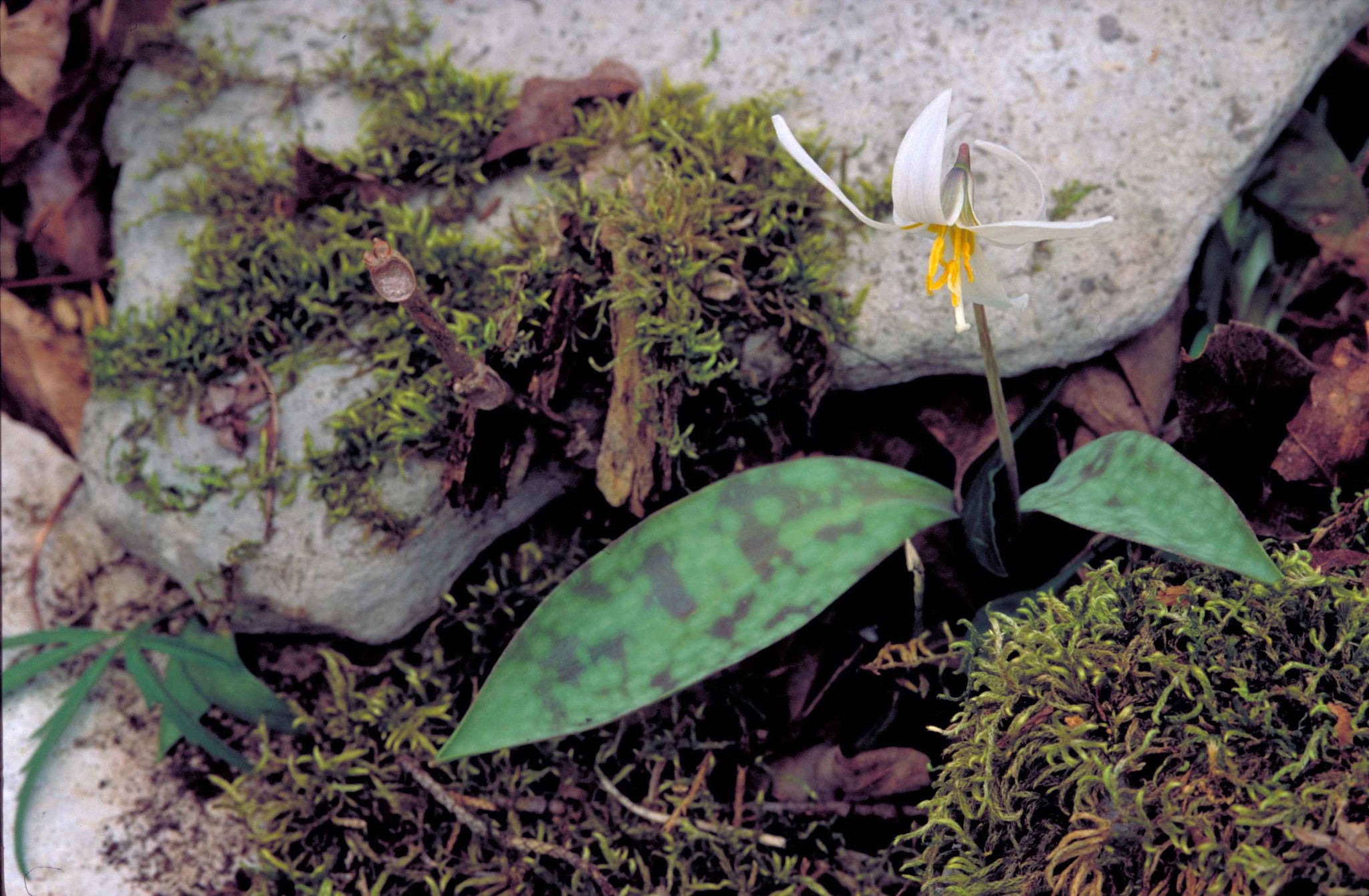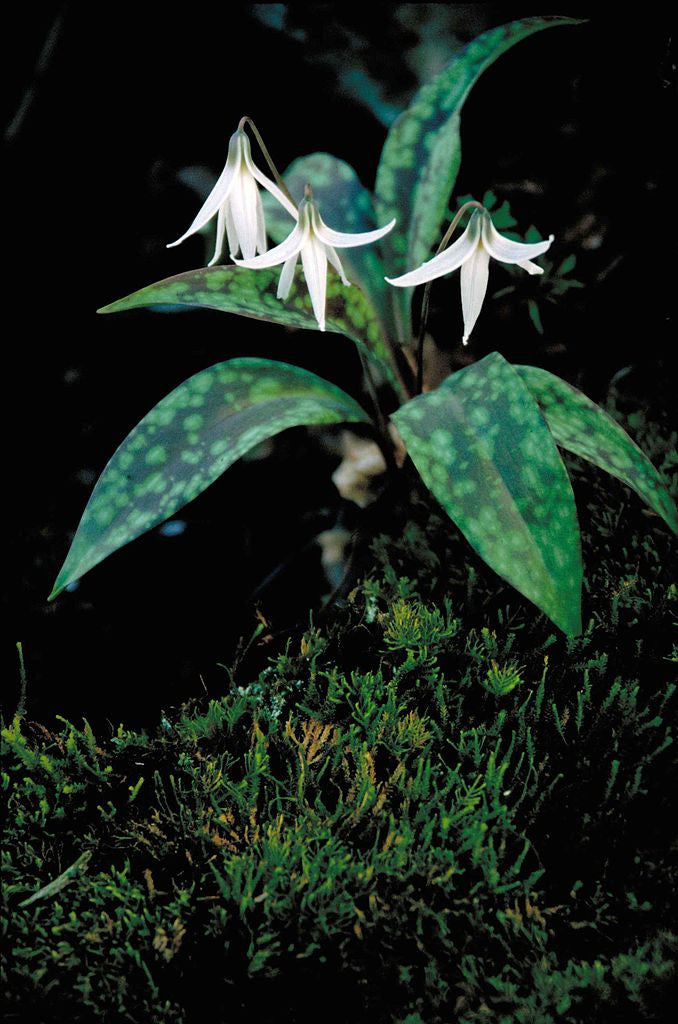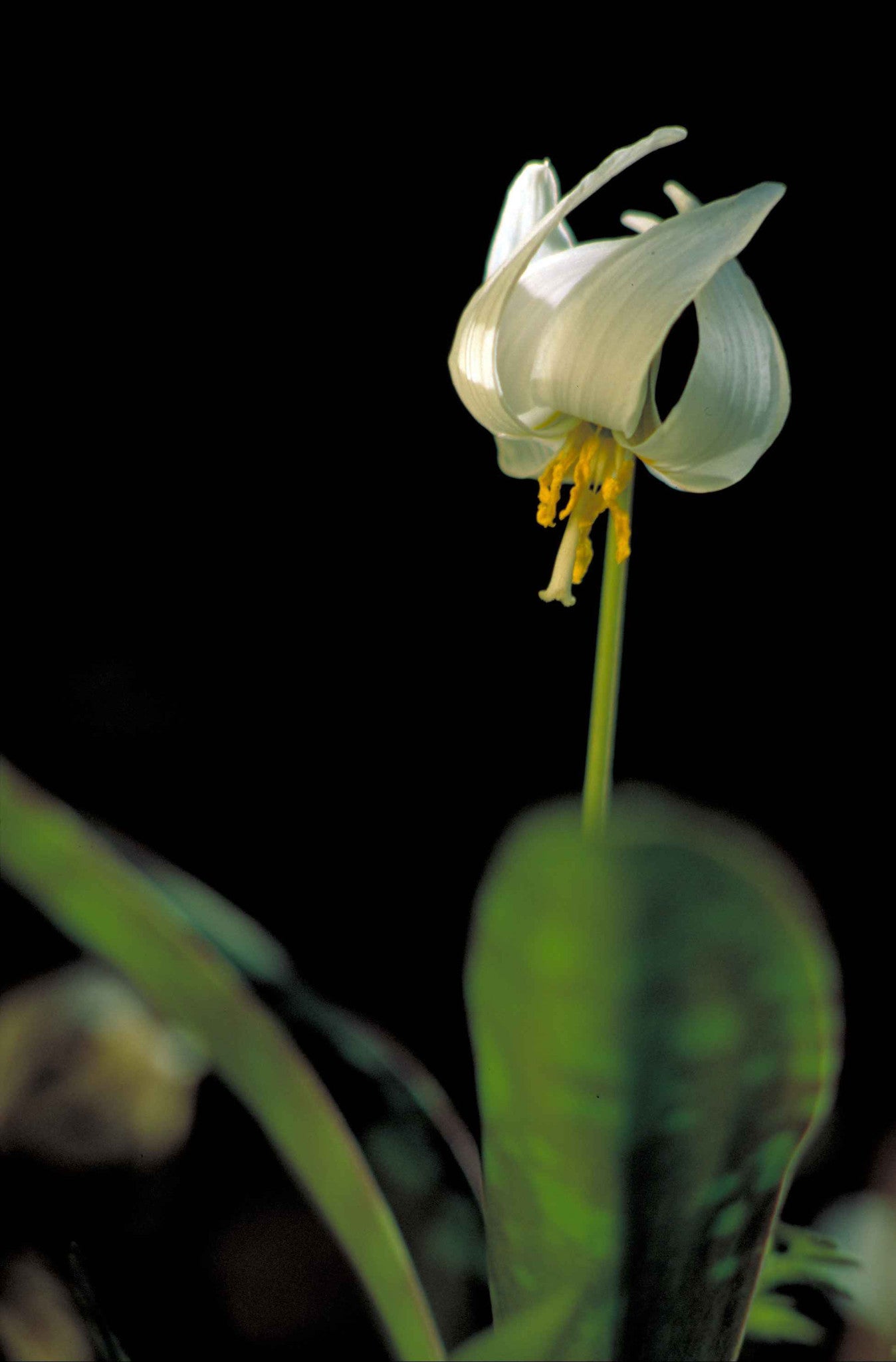Erythronium albidum
Approx. 0.5 litre pot
About this cultivar:
Eythronium albidum is a little-grown North American native trout lily, found in scattered populations from Canada south to Texas. Commonly known as the White trout lily it is a spring ephemeral that emerges in late winter/early spring. It has pewter-green leaves, each highlighted with liver-colored spots. and each flower stalk is topped with a pure white pendulous flower. It spreads slowly via underground rhizomes, eventually forming a large, stunning patch. The dormant rhizomes are minuscule, so be sure to mark your plants with a tag since they go dormant in late spring.
This wonderful plant has quite a bit of folklore surrounding it. There are records of it being used to treat gout, wounds, bruises, swellings, tumours, ulcers, sore eyes, dropsy, hiccups, vomiting, and bleeding of the bowels. It has even been used as a contraceptive!
However I think its best use is as a beautiful garden plant....
- Position: Full sun, partial shade
- Soil: Almost any soil, grows well in Ballyrobert
- Flowers: April, May
- Other features: Grows well in Ballyrobert, Woodland Plant, Dappled Shade or Full Shade Loving
- Hardiness: Fully hardy - grows well in Ballyrobert!
- Habit: Clump forming
- Foliage: Deciduous
- Height: 10 - 25 cm (0.3 - 0.8 ft)
- Spread: 10 - 25 cm (0.3 - 0.8 ft)
- Time to full growth: 2 to 5 years
- Plant type: Herbaceous Perennial, bulb
- Colour: Green, yellow, white
- Goes well with: Shade, woodland or below hedges.
About this genus:
Erythronium (er-ith-ro-ne-um) is a genus of about 20 species that are member of the lily family (Liliaceae). They have quite a few common names such as fawn lily, trout lily, dog's-tooth violet and adder's tongue. The Latin name comes from the Greek word for red, erythros. Erythronium bulbs have had various uses over time- some species are edible and apparently tasty, however other species are slightly toxic and have been used as a contraceptive and emetic. However we use them in the garden!
Well known as woodland type plants they prefer shaded areas and will grow in almost any soil that isn't too wet or too dry. They are also well known for their tongue-shaped leaves; some are mottled with brown or purple trout-like spots, others are dappled with fawn-like white spots and some are plain green. All are beautiful!
Most Erythronium flower in early spring and go summer dormant, so don't worry when they disappear in July. They don't like being moved, so give them at least 3 years in each spot before transplanting! Not sure about companion pants, we grow most of ours in woodland or below hedges!

